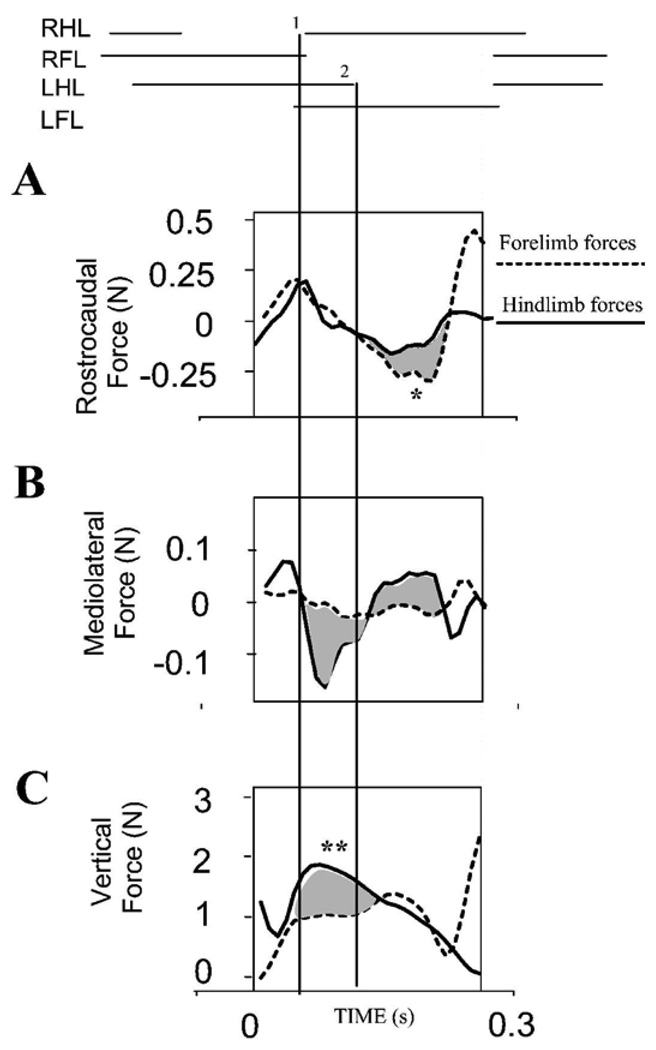Figure 4.
Normal rat. Forelimb and hindlimb force contributions to propulsion, stabilization and weight support. Phase II forces are shown expanded and shaded. Top : stance phase of limbs during transition across plates. A : synergistic decelerative and then propulsive actions of forelimbs (dotted line) and hindlimbs (solid line) is shown by overlapping and similarly directed forces. Rostrocaudal forces correlate well. Individual peak contributions (~0.25N) of forelimbs or hindlimbs are under 10% of body weight (2.7N). In the trial shown forelimbs play a larger part in acceleration (shaded and *). This is within the range of variability from the normal pattern observed in our runway task in which speed was not tightly controlled. B. Lateral forces: most mediolateral force (~0.15N peak, ~5% body weight) is exerted in hindlimbs (solid line). Difference of forelimb and hindlimb contributions are shaded. C: Antigravity forces: Hindlimbs (solid line) carry about 60% more body weight than forelimbs (dotted line). The difference is shaded, and indicated by **. Lines 1 and 2 indicate RHL foot strike and LHL lift.

